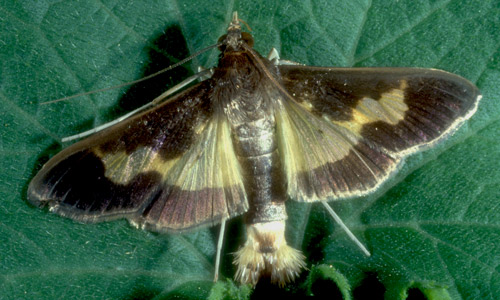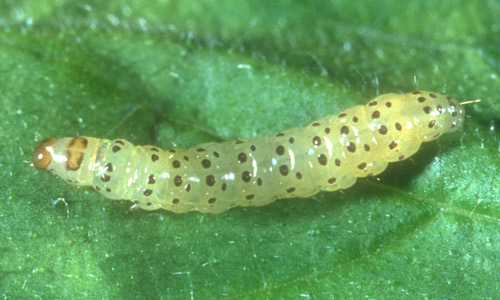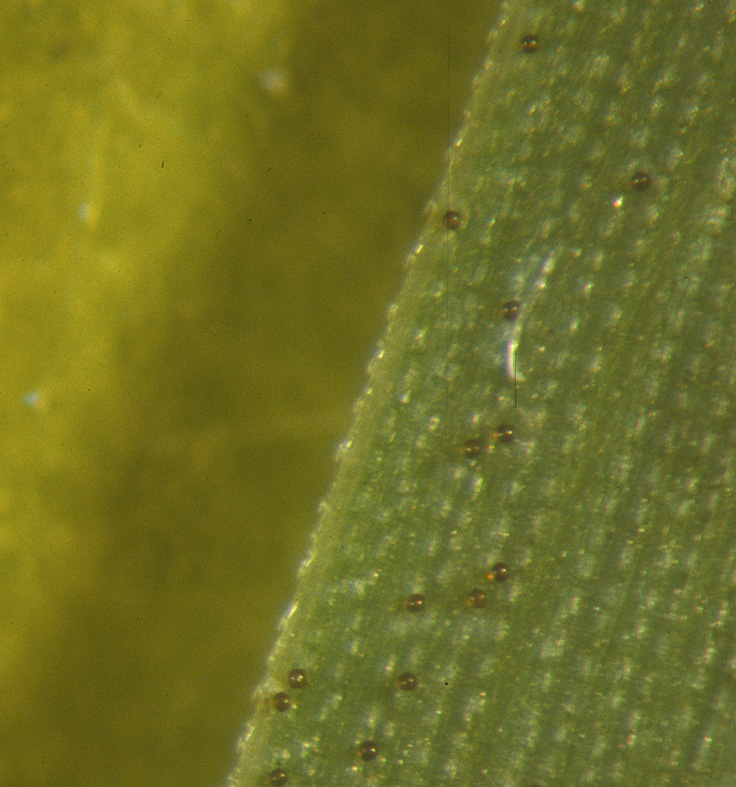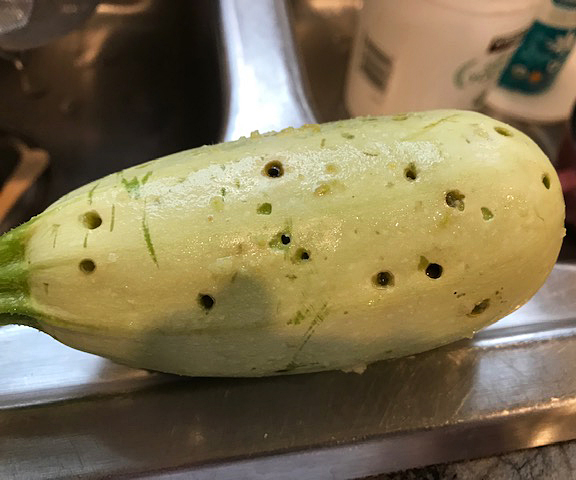Pickleworms
Family name: Crambidae
Latin name: Diaphania nitidalis
Description: Pickleworms are the larvae of the pickleworm moth and are present in tropical regions. Their damage significantly impacts the ability of cucurbit family crops to produce fruits and ruins the fruits that are able to grow. The adult moth has a 1” wingspan, brown wings with a translucent yellow band running through them, and a feathery tuft at the end of their abdomen. Moths lay tiny, cream-colored eggs. The larvae are pale, grow up to ½” long, and have dark spots until they reach their 5th instar. Their feeding activity inside cucurbit fruits can spread disease.
Life cycle: Pickleworms have a 30-day life cycle. The female moths lay clusters of eggs on cucurbit flowers and new growth tips. They can lay up to 600 eggs in their short lifetime! The larvae hatch in 4 days and feed for up to 3 weeks on flowers and fruits, before pupating in a very loose cocoon secured to plant foliage. There can be up to 4 generations of pickleworms in a year.
Typically seen on: Cucurbit family crops (cucumbers, melons, pumpkins, summer and winter squash).
Signs of their activity: Minimal fruit production; round holes in the growing tips of vines and/or blossoms; holes in fruits with frass at the entrance; fruits drop off the vines prematurely; deformed fruits; scarred melon rinds. Be sure to refer to the photo at the bottom of this page.
Controls:
- Plant cucurbit crops earlier
- Choose resistant summer squash cultivars such as ‘Early Prolific Straightneck’ and ‘Early Yellow Summer Crookneck’
- Place row covers over crops immediately following planting; when plants begin to flower, lift the row covers off during daylight hours only because the moths are nocturnal
- If pickleworms have been a problem in your garden in previous years, consider spraying Bacillus thuringiensis variety kurstaki proactively to kill young larvae, but once they have entered the fruits, the Bt will not reach or affect them
- If pickleworms have been problems before, consider not growing cucurbit family crops for a couple of years to break the cycle
- Clean up and dispose of all plant debris, including damaged fruits.
Natural predators: Beetles, fire ants, parasitic wasps, and beneficial nematodes (Steinernema carpocapsae).




